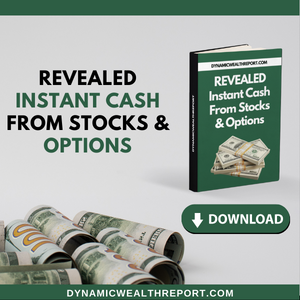Saving And Investing Just One Dollar Per Day
Can saving and investing just $1 per day add up to significant wealth?
Yes. Yes, it can.
Look, I saved and invested well over 50% of my net income for six years straight so that I could achieve financial freedom and retire in my early 30s.
It’s been an amazing journey. Now that I’m living my dream early retirement lifestyle in SE Asia, I’d be remiss if I didn’t do whatever I can to inspire others out there to make their dreams come true.
That’s why a lot of my content revolves around more extreme ideas. That includes content like my most recent best-selling book: 5 Steps To Retire In 5 Years.
I wanted extreme output, which required extreme input.
That said, you don’t have to be extreme to be extraordinary.
Putting away just a buck a day certainly isn’t extreme, yet the end result can be quite extraordinary.
How extraordinary?
I’ll show you.
THE POWER OF COMPOUNDING
Before we get started here, I just want to quickly note that this heavily relies on the power of compounding.
Compounding is a powerful force that you absolutely must take advantage of as soon as possible in life.
You can’t afford not to. Literally.
The immense power of compounding can be explained in any number of ways.
But it really comes down to the difference between linear and exponential growth. Compounding is very much the latter, where you’re earning off of both the initial principle as well as any accumulated gains/interest.
The wheat and chessboard problem is one of the oldest illustrations of the power of compounding:
If a chessboard were to have wheat placed upon each square such that one grain were placed on the first square, two on the second, four on the third, and so on (doubling the number of grains on each subsequent square), how many grains of wheat would be on the chessboard at the finish?
The answer is, shockingly, 18,446,744,073,709,551,615.
Another way to express compounding is the Rule of 72.
By dividing 72 by the annual rate of return, you’re able to obtain a rough estimate of how many years it will take for an investment to double.
So if you’re earning a 10% rate of return (approximately the long-term rate of total return for the broader stock market), you’ll double your money roughly every seven years.
I’ve done my best to show compounding in action, in real-time, by blogging my way from almost broke to financially independent. This is the power of a compounding snowball. Gather up a bit of snow, start at the top of a long hill, and get rolling.
Warren Buffett has perhaps taken advantage of compounding in a way that no ever human being ever has. With a fortune that exceeds $80 billion – after giving away billions of dollars already – he’s done well.
Yet he made more than 99% of his money after the age of 52.
Compounding is like magic. But it requires a lot of time in order to pull off the big tricks.
SAVING AND INVESTING $1 PER DAY FOR 45 YEARS
Let’s do some magic right now.
I’ll assume you start saving and investing $1 per day at 18 years old. That’s $365/year (skipping the occasional leap years).
And I’ll assume that you never, at any point in your life, save and invest more than just that $1/day. You go about your life, doing whatever you want the entire time, but you commit to putting away that $365/year until you retire.
Let’s say this person has no designs on retiring early or even achieving any particular degree of financial independence at a young age. They simply want a healthy and wealthy traditional retirement to look forward to in their early 60s. There’s nothing extreme about any of this.
Again, however, the results can be quite extraordinary.
Investing $365 per year, for 45 years, at a 10% rate of return results in a total of $288,640.29.
Approximately 95% of this is due to compounding. The total principle is just $16,425.00.
So this person did no heavy lifting. They committed almost no effort to saving and investing at all.
Yet they still end up with almost $300,000 at the age of 63, which could be added on top of Social Security payments (and possibly even a pension).
This person, from what I can see, is sitting on a good chunk of wealth. And they should have enough income to live a comfortable lifestyle in their 60s.
Yes, I’m factoring out inflation and taxes for the sake of brevity and illustration.
But the end result remains incredible by any measure.
Of course, if you can save and invest much more than $1 per day, that’s wonderful. I would highly encourage you to do so.
However, even a little bit goes a long way when you get compounding involved at an early age. Compounding doesn’t need much. Give it just a small push and watch it do magic.
CONCLUSION
I frequently get emails from readers indicating how they’re not able to save and invest like I did.
That’s okay. You don’t have to. Not all of us want the same thing.
Even putting away just one dollar per day, especially at a young age, can have a dramatic effect on your financial outcome later in life. Likewise, putting away even modest savings in your 30s or 40s and letting compounding do its magic can lead to extraordinary results.
Don’t compare yourself to me or anyone else.
Instead, look toward compounding and see what you can do to take advantage of this incredible power.
Note: This article originally appeared at Mr. Free @ 33.
Category: Personal Finance



